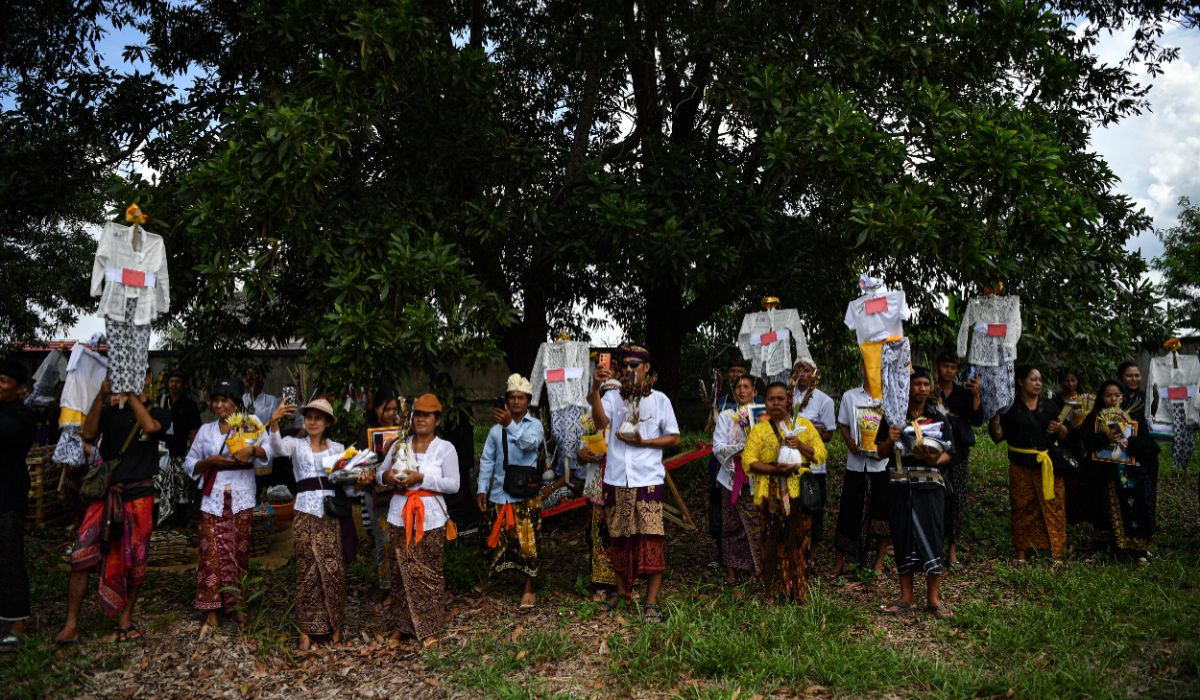PIKIRAN RAKYAT - The island of Bali, Indonesia, is renowned for its vibrant culture and rich spiritual traditions. Among these, the Ngaben ceremony holds immense significance, serving as a cremation ritual for the deceased. While cremation ceremonies are practiced worldwide, the Ngaben ceremony stands out for its unique blend of elaborate processions, artistic expressions, and a celebratory atmosphere. This article delves into the core traditions and symbolism associated with the Ngaben ceremony, offering a glimpse into this fascinating Balinese practice.
The Ngaben ceremony is rooted in the Hindu belief in the afterlife. Hindus believe that the human soul (atman) transcends the physical body (sarira) upon death. The Ngaben ceremony is seen as a crucial step in facilitating the atman's journey towards spiritual liberation (moksha). Through elaborate rituals and symbolic offerings, the ceremony aims to sever the atman's attachment to the earthly realm and guide it toward its next incarnation.
While the specifics of the Ngaben ceremony can vary depending on location and family traditions, the core elements generally follow a similar structure. The process can be lengthy, sometimes spanning days or even weeks. Preparations involve the construction of a special sarcophagus, often intricately decorated and resembling animals or mythical creatures. Prayers and offerings are made to appease the spirits and ensure a smooth transition for the deceased.
A Journey Through Tradition: Exploring Key Elements of the Ngaben Ceremony

While the specifics of the Ngaben ceremony can vary depending on location and family traditions, the core elements generally follow a similar structure, sometimes spanning days or weeks. Here's a breakdown of the key stages:
Mekertiya
This initial stage involves purifying the deceased's body and surrounding environment. Priests perform rituals to cleanse the spirit and ward off evil influences. The family may also gather to share stories and memories of the deceased.
Nguaben Pawedaan
The construction of the unique sarcophagus takes place during this stage. The sarcophagus, known as "wadah," serves as a temporary dwelling for the deceased's spirit before cremation. These sarcophagi are often intricately decorated and crafted from wood or bamboo. The decorations can take on various forms, such as animals, mythical creatures, or even human figures, reflecting the deceased's personality or social status. The construction of the wadah is a collaborative effort, involving skilled artisans and family members.
Ngaben Ceremony
This is the central stage of the ceremony, marked by a vibrant procession. The elaborately decorated wadah is carried through the village streets, often accompanied by music, dance performances, and colorful umbrellas. The procession can be quite grand, involving not only the immediate family but also the entire village community. It signifies the deceased's final journey from the earthly realm and their passage towards a new spiritual beginning.
Sawa Wedana
The ceremony's culmination involves the wadah's cremation. The fire symbolizes the burning away of earthly attachments, allowing the atman to move on. This stage is often marked with solemnity as family members pay their final respects. After the cremation, the ashes are collected for further rituals or scattered in designated areas.
A Celebration of Life and Beyond
While the Ngaben ceremony revolves around death, it's not solely a somber occasion. The vibrant processions, colorful decorations, and celebratory atmosphere reflect the Balinese belief in the continuation of life after death. The ceremony serves not only as a farewell but also as a celebration of the deceased's life and their passage towards a new spiritual journey.